The world food sterilization equipment market has significantly changed in recent years due to changing customer preferences, technological advancements, and strict food safety regulations. This article explores the present tendencies driving this market, highlights some ground-breaking methods of preserving food, and evaluates prospects for its growth. To ensure safe and nutritious food is always available, manufacturers, distributors, and consumers must grasp how this market operates today. Let us discuss the main drivers shaping the trajectory of the food sterilization equipment industry.
What is the Current Market Share of Food Sterilization Equipment?
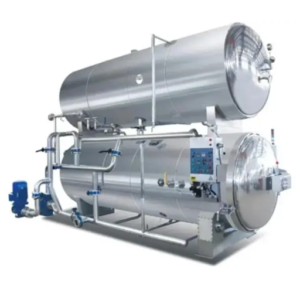
Image source: https://reads.alibaba.com/
Global food sterilization equipment will substantially hold a global market share of the overall food processing industry. Recent researches argue that about 40% of its niche specializing in steam sterilization dominates the commercialized foods manufacturing field. Other technologies like high-pressure processing (20%) and microwave sterilization (15%) also represent new opportunities or threats depending upon perspective. Various sterilizing techniques differ, thereby influencing applications in several sectors, thus leading to projections indicating a CAGR (compound annual growth rate) of 6% over the next five years due to increased investments in compliance with food safety measures and preference for convenience foods.
Understanding the Food Sterilization Equipment Market Share
The overall market is valued at around $5 billion, and it might increase rapidly because of fears about foodborne diseases and more extended preservation periods. Mentions steam sterilization as the primary category, with a growing inclination for other approaches, including ultraviolet sterilization, which is gaining ground due to its efficiency and high productive capacity. According to Grand View Research, technological advancements are crucial since sterilization process automation will contribute significantly to boosting growth, especially within the meat and dairy industries. These findings paint a complete picture of the market landscape, showing how it has changed.
Key Market Players and Their Contributions
Avidity Science is one of the leading firms in this sector, providing various options for disinfection solutions used by food companies Market Research Future. This company’s focus on modern technology, as well as client-based remedies, ensures that there is an improved food safety culture. Another significant player Mordor Intelligence highlights is GE Healthcare, whose state-of-the-art steam sterilizers are widely used in food processing. On top of that, Thermo Fisher Scientific is seen as a strong competitor who, according to Grand View Research, develops automated sterilization techniques that ultimately minimize operational risks associated with contamination in beef and milk manufacturing enterprises. Together, they form an integral part of significant achievements aimed at enhancing effectiveness alongside safety across markets dealing with the food sterilization equipment sector, as such advancements indicate.
Growth of the Food Sterilization Equipment Sector
Consumer demand for safe and additive-free food products drives significant growth in the food sterilization equipment sector. This indicates that technological advancements, particularly automation and sterilization process efficiencies, are increasingly significant in enhancing operational efficiency within the food production industry. The market is anticipated to increase due to stringent health regulations and increased recognition of food safety. Furthermore, Grand View Research reports suggest that digital trade has intensified the need for more efficient sterilizers since manufacturers want to maintain strict hygiene standards when selling their products online. These findings underscore a robust growth trajectory of this market segment, thereby underscoring its vital role in ensuring food quality and safety.
How is the Food Sterilization Equipment Market Size Projected to Grow?
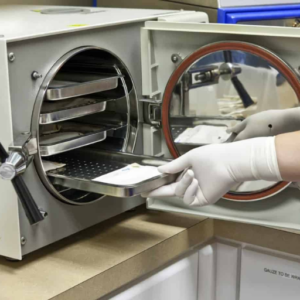
The food sterilization equipment market is expected to increase for several reasons. This implies that with an expanding world population and growing consumption levels, food security must be emphasized through safe processing methods. It is also expected that technological innovations will boost this growth, including improved automation and better sterilizing methods. Also, stringent regulatory frameworks are significant concerning foods’ safety and hygienic conditions, leading investors to buy advanced sterilizers. Finally, e-commerce has necessitated rigorous safety standards for channels involved in distributing foods, thus contributing further to the upward trend of this market, which marks an emanation point from other segments within the entire food processing industry.
Forecast Period Projections and Trends
In years to come, the food sterilization equipment market is expected to advance significantly due to technological innovations and changing consumer tastes. The market is expected to grow at a CAGR of more than 8% from 2023 to 2028, primarily because of the increased focus on food safety and quality assurance. Research and Markets have also indicated that intelligent technologies like IoT integrated with sterilization processes will improve efficiency and monitoring. Moreover, Statista predicts that there will be an increase in global e-commerce food sales, thus raising the demand for effective sterilization solutions, making these technologies crucial in upholding hygiene standards at distribution and processing facilities.
Impact of Food Safety Regulations
Rules concerning food safety shape the food sterilization equipment market. Complying with strict safety standards ensures food products are free of contaminants and fit for consumption. Websites such as the Food and Drug Administration highlight how adhering to rules protects public health and builds confidence in processed food items. Moreover, the World Health Organization (WHO) insists on regulatory frameworks that would enable better global health through the effective adoption of safe food practices. Again, resources from the U.S Department of Agriculture (USDA) stress regular checks, thus driving advanced sterilization technologies investment among industry players aiming at meeting regulation requirements, therefore reinforcing its growth potential for this industry (MarketLine Business Information Centre). There must be harmony between technology and regulations to guarantee safe foods that protect customers’ interests.
Market Research Insights and Analysis
The sterilization industry is growing fast due to technological advances and increased consumer knowledge about food safety; they predict that advanced methods like automated sterilizing systems will help lower operating costs and improve efficiency.
Food processors are making increased investments to meet safety standards through sterilization. Their data reveals a greater demand for machines designed to handle various types of foods; hence, more attention is being given to customization and flexibility while sterilizing.
Major players heavily invest in developing better and sustainable sterilization technologies. They also claim there has been an increase in strategic partnerships and acquisitions as firms seek to expand their product offerings and make them available all over. From these facts, one can deduce that technology coupled with adherence determines the market’s direction toward growth.
What are the major market dynamics that influence growth?
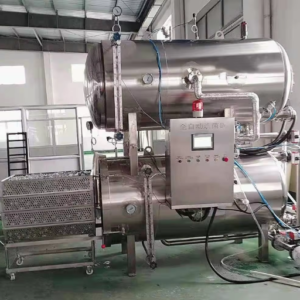
Several fundamental market dynamics influence the food sterilization equipment market. First, consumer awareness and demand for food safety have increased regulatory requirements, leading manufacturers to adopt more sophisticated sterilization solutions. Second, technological advancements promote innovations with automated and more efficient sterilizers that are cost-effective and streamline firms’ operations. Third, increasing investments by food manufacturers in compliance measures underscore the need for flexible equipment for processing different foodstuffs. Lastly, strategic alliances and collaborations among companies in the industry have created a competitive environment that supports continuous research and development, resulting in better product offerings that meet changing market demands.
Demand for Food Sterilization Equipment
Several factors are driving a high growth rate in demand for food sterilization equipment. First, the rising global population, coupled with changing preferences among consumers towards safe and long-lasting products, has increased demand for reliable sterilization methods. That the worldwide market for food sterilization equipment will grow as governments enforce strict regulations on food safety, forcing manufacturers to incorporate new technologies into their processes. Furthermore, a report from Research and Markets shows that an upsurge in ready-to-eat meals and packaged foods increases this need considering that most consumers prefer convenience without compromising safety. Also, Grand View Research stresses innovations like high-pressure processing (HPP) or microwave-assisted thermal sterilization (MATS), which, apart from enhancing quality, also improve operational efficiency, meeting the ever-rising producer–consumer expectations within the industry.
Innovations and Technological Advancements
Technological advances and the need to improve food safety are fueling rapid changes in the development of food sterilization equipment. Automation integration with artificial intelligence (AI) in sterilization procedures for process efficiency and accuracy is among the three top trends that current investigations have identified. For instance, real-time monitoring of sterilization cycles by AI systems guarantees that optimal conditions are maintained, thereby minimizing human error and promoting compliance with food safety standards.
Moreover, pulsed electric field (PEF) treatment and cold plasma sterilization are two technologies that have gained momentum. These methods effectively lower microbial count but preserve the sensory and nutritional qualities of food products. According to recent industry insights, such developments pave the way for more energy-efficient operations and reduced production costs in the future.
Additionally, recent emphasis on sustainable practices has necessitated the development of greener sterilizing solutions. The research underscores the growing need for technologies that minimize water and energy consumption while maintaining practical sterilization standards aligned with global sustainability goals. This continuous call for innovation is expected to redefine the food sterilization landscape to meet ever-changing customer needs and regulations.
Key Market Segments and Their Evolution
Different technological advancements and consumer demands influence the various areas that make up the food sterilization equipment market, thus exhibiting different growth patterns. There are three major segments:
- Commercial Food Processing: This segment is growing fast as food manufacturers increasingly adopt automated sterilization solutions to meet higher food safety standards. AI-driven systems facilitate real-time monitoring and optimization of processes, thereby reducing operational costs and waste.
- Household Sterilization Products: As more people become aware of these diseases, household sterilizer sales have increased. Innovations in user-friendly designs and effective sterilizing methods, such as portable UV sterilizers or microwave sterilization bags, satisfy consumers’ convenience and safety desires.
- Pharmaceutical and Biotechnology Applications: The expansion of the pharmaceutical industry has fueled innovations in sterilization methods for biopharmaceutical products. To strictly observe regulatory standards, technologies like steam sterilization and advanced filtration systems continue to be refined to maintain the viability of delicate biological materials.
These segments indicate a bigger trend towards increasing consumer awareness alongside regulatory requirements, which has led to transformation in food sterilization practices worldwide.
How Does Continuous Sterilization Compare to Batch Sterilization?
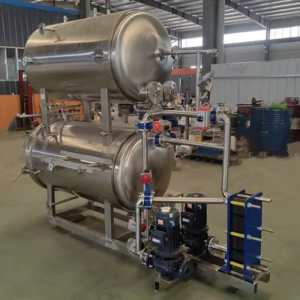
At the same time, it is possible to single out continuous sterilization and batch sterilization as two different processes that are aimed at sterilizing items. In a steady flow process of continuous sterilization, materials are fed into the system continuously and sterilized without interruptions. Thus, this approach is often much better for larger-scale operations since it reduces downtime while increasing throughput. Also, batch sterilization exists, which performs materials in separate groups, requiring the system to stop between two consecutive batches for loading or unloading purposes. Although batch sterilization allows one to have reasonable control over all sterility parameters and can be used for low volumes, it still takes longer cycle time, and more labor is required.
Advantages and Disadvantages of Batch Sterilization
Advantages:
- Precise Control: Batch sterilization allows meticulous control over sterility parameters, which suits certain products that only maintain their integrity under particular conditions.
- Flexibility: It can handle many products in any volume, making it appropriate for small runs or when working on heterogeneous things.
- Lower Initial Investment: The capital costs of batch autoclave sterilizers are usually lower than those of continuous systems, making them exceptionally well-suited for small enterprises or startups.
Disadvantages:
- Longer Cycle Times: Batch autoclaving tends to have long hold-up times because material loading/unloading has to be done, leading to diminished overall efficiency compared to continuous processes.
- Increased Labor Costs: High labor costs are due to manual handling during batch loading/unloading, especially with high throughputs.
-
Potential for Inconsistency: Inconsistency in results caused by variability in loading/unloading procedures and human errors may compromise sterility quality.
Efficiency and Effectiveness of Continuous Sterilization
Continuous sterilization systems represent a straightforward way of maintaining uniform sterilization conditions during production. This is one of the benefits in that they can operate with much shorter cycle times, which increases throughput and reduces the costs of loading and unloading labor. Continuous systems have also been found to ensure consistent exposure times and uniform heat transfer, minimizing product variations and ensuring high-quality output. Additionally, these are usually automated, requiring less manual intervention and minimizing chances for human error. Continuous sterilization improves efficiency and enhances product quality and compliance with stringent regulatory requirements for large-scale operations.
Market Growth Trends of Each Sterilization Method
An increasing market for sterilization equipment is driven by technological advancements and increased regulation needs. The most recent data from the leading sources argue that the continuous sterilization method has the highest growth rate because it is efficient enough to handle mass-volume production needs. Batch sterilizers are declining even though they are still widely used as industries move towards methods that offer more consistency and lower operational costs. In addition, emerging technology markets such as plasma and microwave-based sterilization techniques are expanding, especially in some niche applications where conventional methods may not suffice. The entire industry seems inclined to move towards automated continuous systems that deliver better product safety and quality assurance within the pharmaceuticals, healthcare, and food processing sectors.
What Technologies Dominate the Sterilization Equipment Market by Technology?
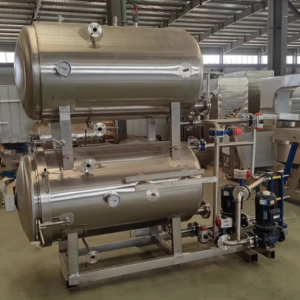
Various technologies dominate the market for sterilization equipment, and each of them has distinct advantages that are suitable for specific applications. Autoclaving, or steam sterilization, is still the most commonly used procedure due to its efficiency, broad-spectrum antimicrobial activity, and relatively low cost. Another critical technology is Ethylene Oxide (EO) sterilization, which has favored the healthcare industry because of its ability to sterilize heat-sensitive medical devices. Hydrogen peroxide vaporization and radiation-based sterilization methods such as gamma and electron beam sterilization are proving popular due to their ability to sterilize complex products and packages. Emerging trends include microwave and plasma-based methods of sterilization, which have started finding their place driven by demand for enhanced specialized applications, faster, efficient means of disinfection, etcetera. In general, a move is towards multi-purpose automated systems designed to improve effectiveness while ensuring adherence to regulatory guidelines.
Exploring High Voltage Electric Field Sterilization
High Voltage Electric Field (HVEF) Sterilization is an innovative technique gaining popularity due to its no chemical or high temperatures use of necessary efficacy against microorganisms. Extensive research revealed that via HVEF, high voltage is applied to generate an electric field that disrupts microbial cell membranes, causing cell death. Such a method proves particularly useful when applying aseptic processing on sensitive materials and foodstuffs without spoiling nutritional value or quality, including safety aspects. The other advantage of HVEF technology lies in fast processing speeds, thereby reducing the time required for sterility compared to traditional techniques. Consequently, HVEF possesses features of being an efficient, environmentally friendly solution whose applicability coincides with present industry inclinations towards ecological viability automation, among others, since current demands require effective germicidal options that do not harm the environment.
The Rise of Ultraviolet Sterilization Equipment
The popularity of ultraviolet (UV) sterilization equipment has exploded, mainly driven by the global pandemic and its ability to eliminate pathogens without chemicals. Ultraviolet light works by damaging the microorganisms’ DNA or RNA and making them unable to reproduce. This technique can be employed in healthcare, food processing, and water treatment, thus quickly resolving the issue of disinfection. The technology has also seen advancements in UV-C, resulting in more efficient and automated systems that are easier to use and integrate with existing processes. The increasing demand for hygienic environments will continue pushing increased sales for UV sterilization equipment as a component of a more significant move towards inventive disinfection solutions.
Inductive Electronic Sterilization Equipment and Its Benefits
Electromagnetic fields create heat within materials used for induction electronic sterilization equipment; hence, sterilization is achieved through controlled heating. It is particularly applicable when sterility is required without moisture, thus making it ideal for heat-sensitive products such as electronics and pharmaceuticals. Other benefits include rapid sterilization times, uniform heating, and lower risk of contamination compared to conventional sterilization methods. Moreover, this technology increasingly aligns with automation systems as the industry seeks efficiency and less human intervention. Inductive electronic techniques are at the forefront of becoming a strong competitor in sterilizing technology since businesses look for dependable ways to eliminate germs effectively.
Can We Get a Comprehensive Market Overview?
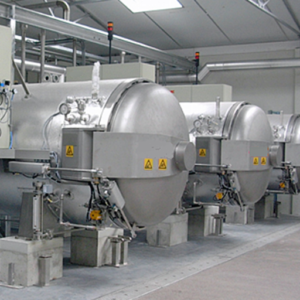
The market for sterilization technology is experiencing vigorous growth, given the increasing knowledge of hygiene and growing demand for effective sterilization solutions across various industries. It is observed that the healthcare sector has been a major factor due to strict regulations and the need to provide safety to patients, which has increased the adoption of sophisticated methods of sterilization such as UV-C and inductive electronic. Moreover, this industry has seen faster incorporation of advanced sterilization technologies by companies in food processing and pharmaceuticals that improve product shelf lives and maintain quality standards. As the world moves towards sustainable practices, increasingly environmentally friendly methods are being made for sterilization globally. This transition represents a trend toward a greater focus on health and safety as it makes sterilization a significant part of modern industrial protocols.
Food Sterilization Equipment Market Report Summary
According to recent reports on the industry, there is projected to be substantial growth in this market owing to advancements in technology and the increasing need to meet food safety standards. Key firms are exploring new ideas including high pressure processing (HPP), microwave irradiation among other ways thus maintaining nutritional value while enhancing operational effectiveness. Similarly, the e-commerce boom with its accompanying globalization processes necessitates investment into modern disinfection systems along the supply chain. The industry’s shift towards more sustainability-oriented manufacturing techniques means more food safe practices that use eco-friendly disinfectants. The food sterilization equipment market is positioned at the confluence between technology, security, and green thinking or environmental consciousness.
Regional Market Analysis
The regional market for food sterilization equipment varies considerably, influenced by economic factors, regulations, and consumer preferences.
- North America: This region has the highest share due to strict food safety regulations and a developed food processing industry. With improvements in sterilization technology, products have increased through high-pressure processing and microwave sterilization.
- Europe: Europe is witnessing an increase in demand for environmentally friendly sterilization solutions that result from consumer preference for sustainability and healthy products. Further investments into advanced sterilization technologies are being encouraged due to the robust food safety standards within the EU.
- Asia-Pacific: Changes in dietary patterns, increasing urbanization, and a rising population have proliferated this region. Meanwhile, China and India, among others, invest heavily in modern sterility equipment to cope with the escalating demand for safe edible items and reduce food wastage issues.
In conclusion, each region adapts to specific local needs and regulations, indicating the importance of customized approaches toward encouraging growth as the food sterilization equipment market transforms accordingly.
Insights into the Global Market
Technological advances in food sterilization and the increased concern for food safety indicate that the global market for food sterilization will grow. Based on recent reports, the market is expected to witness a CAGR of slightly over 6%. One area where key players are focusing is innovation, such as inventing more effective and environmentally friendly sterilizers. This has dramatically influenced demand across different regions due to rising levels of consumer awareness regarding hygienic standards involved during consumption. Besides, extensive research efforts are being undertaken to enhance product offerings, which makes the worldwide arena highly competitive. A significant trend shaping future market dynamics involves integrating automation and intelligent technology into sterilization processes.
Frequently Asked Questions (FAQs)
Q: What is the current size of the global food sterilization equipment market?
A: The global food sterilization equipment market has been valued at several billion dollars in recent years and has been showing steady growth. Factors such as the increasing awareness of food safety and the demand for food products’ shelf life contribute to this market size.
Q: What factors are driving the growth of the global food sterilization equipment market?
A: Several factors drive the growth, including increasing focus on food safety, stringent food regulations, rising demand for sterilized and highly processed food products, and technological innovations such as voltage electric field sterilization equipment. Additionally, the expansion of the food and beverage industry is contributing to this growth.
Q: How is the market for food sterilization equipment expected to develop in the coming years?
A: The market is expected to grow at a CAGR, reflecting increasing demand for safer, longer-lasting food products. Advancements in sterilization technologies and the expanding food processing industry will largely drive the growth.
Q: What role does the food processing industry play in the food sterilization equipment market?
A: Food processing is crucial to the food sterilization equipment market. It relies heavily on sterilizing equipment to ensure the safety and longevity of processed food products. Innovations in food processing techniques further drive the demand for advanced sterilization solutions.
Q: Which types of sterilization processes are commonly used in the food industry?
A: Common sterilization processes in the food industry include heat sterilization, chemical sterilization, and newer methods like voltage electric field sterilization. These processes are essential in maintaining food safety and extending the shelf life of food products.
Q: Why is there an emphasis on voltage electric field sterilization equipment in recent market trends?
A: Voltage electric field sterilization equipment is gaining attention because it offers a non-thermal method of sterilization. This method is efficient and suitable for a wide range of food and beverage applications, particularly for maintaining the nutritional and sensory qualities of food products.
Q: How significant is the role of canned food in the food sterilization equipment market?
A: Canned food holds a significant market share in the food sterilization equipment market due to the necessity of thorough sterilization to ensure safety and longevity. The growing consumption of canned food globally contributes to the demand for advanced sterilization solutions.
Q: What are some significant challenges facing the global food sterilization equipment market?
A: Challenges include the high cost of advanced sterilization equipment, stringent food safety regulations, and the need for continuous technological upgrades to address evolving safety standards. Maintaining the balance between efficient sterilization and preserving food quality is a constant challenge.
Q: How are market research reports valuable for stakeholders in the food sterilization equipment market?
A: Market research reports provide valuable insights into industry trends, growth potential, competitive analysis, and consumer behavior. These reports help stakeholders make informed decisions, identify opportunities, and strategize for future food sterilization equipment market growth.
Q: What impact does the beverage industry have on the demand for food sterilization equipment?
A: The beverage industry significantly impacts the demand for food sterilization equipment. Ensuring the safety and longevity of beverages, especially those with high spoilage risks, requires effective sterilization solutions. As the beverage industry expands, it drives the need for more advanced and efficient sterilization equipment.












